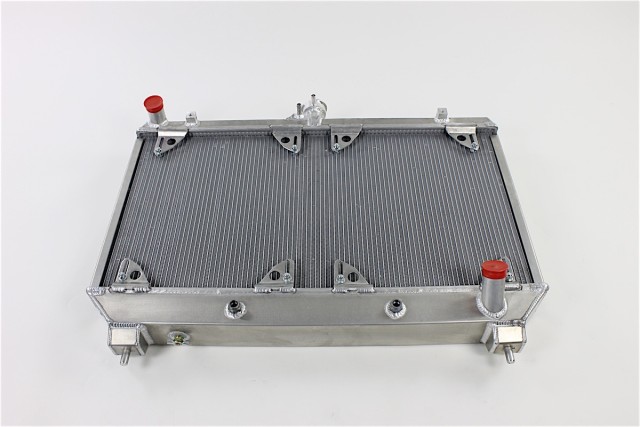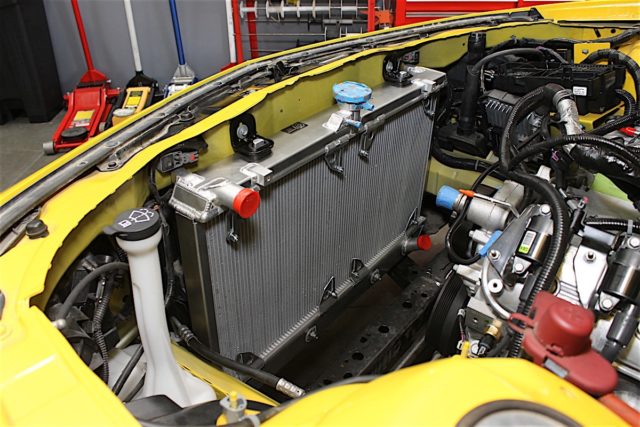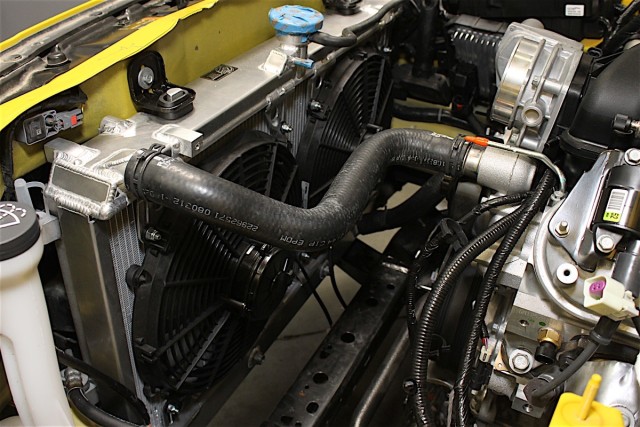When it comes to outfitting your car for serious performance use, it pays to really do your homework and read past the rhetoric. For instance, Chevrolet’s Z/28 components for the Camaro are designed for road course work, but to what extent are we really talking about here? Manufacturers build their road cars to a price, and with that you can inherently expect some compromises.
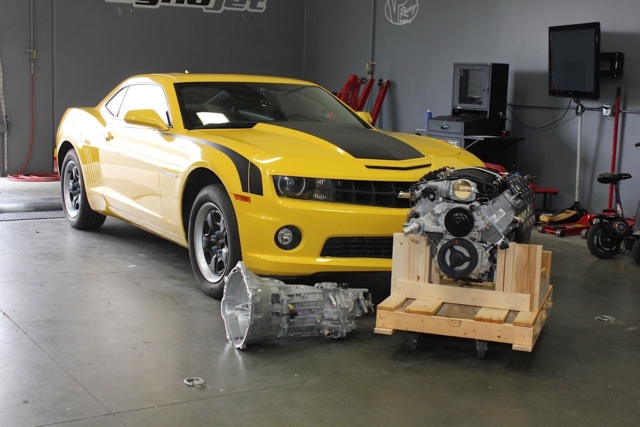
If all goes according to plan, this car is going to see some real road-course abuse in the near future, and it’s going to need a cooling system that can keep up with the pace.
That’s usually not much of a problem for most drivers. The Z/28, while the most track-focused model in the Camaro lineup, likely will spend a lot less time at the race track than it will on public streets (and tucked away in collectors’ garages). Chevrolet is well aware of that, so many of those track-related components – the cooling system included – are built to withstand the level of abuse that the company expects the majority of the cars purchased to see.
Camaros have a road racing history dating all the way back to the Trans Am series of the 1960s. With the independent rear suspension on the fifth-generation model the car is ripe for track work, and Chevrolet’s provisions for race-spec equipment makes upgrading the Camaro far beyond factory capabilities a pretty straightforward task. And that includes the cooling system – a reasonably stout setup in the Z/28 for typical use. But we don’t do typical.
While most Z/28s will likely get flogged at a track day here and there, with about 30 minutes of sustained track time per session, there are those among us out there who have loftier ambitions for our vehicles. Accordingly, we’re installing a Be Cool dual-core radiator and dual-fan setup on Project Lucky 13 to make sure this track-tuned Camaro will have the cooling system it needs to keep going, lap after lap.
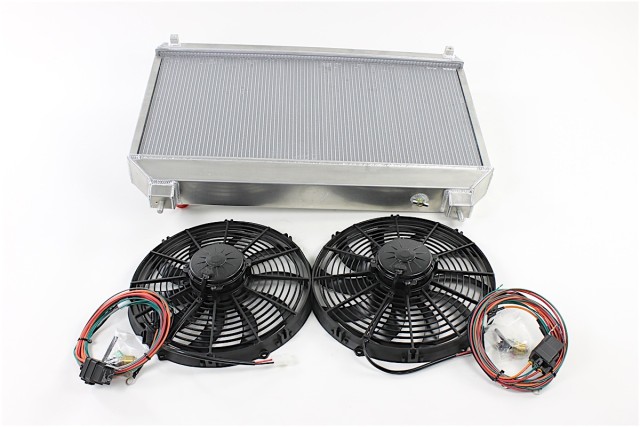
Along with the radiator and fans we sourced from Be Cool, we also nabbed a radiator cap (PN. 70001) as well as two wiring harnesses for the fans (PN. 75021). Worth noting is the fact that while the fans will function as designed off the stock ECU’s instructions, they need a 40 amp relay per fan as opposed to the 30 amp relay used with the stock piece.
The Car
Some of you may already be familiar with Project Lucky 13. For those that are not, this is a theft recovery car we picked up last summer that lacked power train and other fairly essential bits. In the months since, we’ve been building this 2013 Camaro into an LS7-powered track monster that can also handle daily driving duties as well.
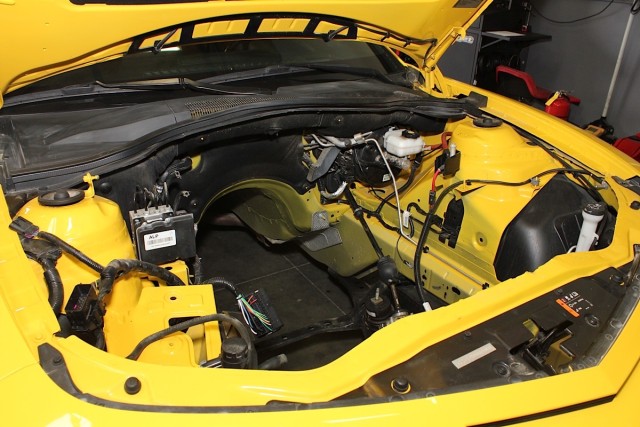
When we took in this project Camaro it was basically a shell – and not even a roller at that. Along with the lack of a motor seen here, the transmission, wheels, brakes and seats had all been liberated from the car, presumably to build a really awesome go-kart.
While that might sound like a recipe for a Z/28 clone – and the project is getting some support from the folks at Chevrolet Performance – we know that we can build this car out well beyond the ceiling of the Z/28’s capability.
In nearly every conceivable instance, heat is the enemy of automotive performance: It causes brakes to lose stopping power, it can result in reduced engine output (particularly in supercharged motors), and perhaps most importantly, it can lead to detrimental engine problems if internal temperatures get out of hand.
In motorsport – and in endurance racing in particular – mechanical failure has a way of being the great equalizer between entrants, and we’re building Lucky 13 to be as mechanically bulletproof as we can.
Going Competition-Grade
With that concept of serious on-track durability in mind, we’re going several steps beyond the Z/28’s cooling system with Be Cool’s dual core radiator (PN. 62215), a pair of electric fans, and a few related accessories. These pieces are cut from the same cloth as the equipment that many professional racing teams use with their competition cars, so we’re pretty confident that they’ll be able to keep the LS7’s temps down no matter what we throw at them.
“As good as Chevrolet’s Z/28 system is, there’s a number of compromises in the equation that can lead to inadequate heat dissipation,” said Justin Larocque of Be Cool. “Over time, plastic tanks tend to fail, the crimp-style gaskets are suspect, and in general the system just doesn’t manage heat as well as other available designs can.”
To that end, Be Cool’s radiator is built from aircraft grade aluminum, which not only keeps weight in check at the front end of the car, it’s far better at mitigating heat soak than the OEM components.
“Ultimately, you want to maximize core surface as much as you can, too,” Larocque added. “This radiator uses two one-inch diameter cooling tubes and a crossflow design that’s substantially more effective that the stock single-core system.”
And the build quality of these USA-made radiators is visually obvious as well. “Most people will only buy a Chinese-made radiator once,” Larocque quipped. “The difference is very clear.”
It’s important to note that there are some differences between the 2010-11 and 2012-15 Camaros that affect which radiator you’ll need. For ’12 models and up, the mounting for the AC condenser and fan was relocated, so while the radiators are the same, the bracketing is not. We ended up with a 2010-11 model by mistake but we were able to fabricate and weld on some mounts to solve the problem in the interest of saving time. However, if we’d had the right part on hand, this radiator would drop right in in exactly the same manner as the stock one did.
To complement the radiator, we installed a pair of Be Cool electric fans (PN. 75003) to keep air moving through the engine bay at maximum efficiency. These sealed-unit fans are known for their steadfast reliability, which is particularly important at low speeds where there naturally isn’t as much air flowing through the engine bay. “I could probably count the number of these fans that have gone bad in recent years on one hand,” Larocque said.
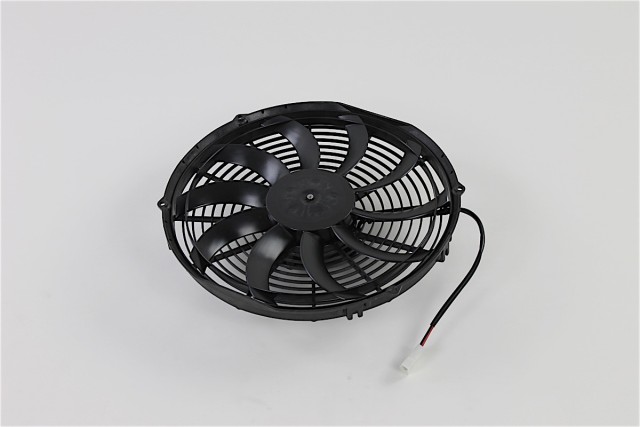
Be Cool’s fans are the only parts they sell which are not built in the U.S. – they’re brought in from Italy, where they’re used by OEMs like Lamborghini, Ferrari and Maserati in production. The blades of these fans are pitched one way to maximize air flow efficiency. That differs from the stock fan, which has blades that can be oriented either way at the cost of airflow performance.
Dialing In Your Build
It’s because of that bulletproof durability, Larocque told us, that a number of guys who are building cars for NASA’s American Iron class, the SCCA’s A-Sedan class, and even autocross events select these components for their builds rather than the OEM performance offerings.
The fifth-generation Camaro is a big car and it needs a big cooling solution because of that.
What we’re using on Project Lucky 13 isn’t a universal solution though – the Camaro’s relatively large footprint means there’s plenty of room to fit a lot of radiator surface area at the front of the engine bay. But the smaller the car is, the less room you have to work with under the hood, so spatial limitations can become a concern when you’re trying to maximize cooling potential. Fortunately, smaller engine bays usually mean smaller cars and, in turn, lighter curb weights with less requirement for cooling capacity.
However, it’s important to remember when determining the right combination of parts for your build that going big is not always the best option – in fact, in some very rare cases, the entire cooling system might be essentially superfluous. “There are some builds, like hardcore drag cars for instance, where some guys don’t run any cooling system at all,” Larocque pointed out.
That makes a lot more sense in context of drag racing, where getting as much weight off the front end as possible is essential and the engine is only running at wide open throttle – if it’s running at all – for short bursts of time, negating the need for prolonged cooling.
And while maximizing surface area and airflow is obviously preferable, there are other considerations you have to take into account.
We, uh, capped things off with this billet aluminum piece (PN. 70001), which matches the aluminum radiator quite nicely.
“The first is spatial limitations,” Larocque said. “Obviously you can’t fit a massive radiator into a small chassis if the space for the installation isn’t there.” And to that end, clearance issues have to be taken into account as well – air conditioning condensers and water pumps are the most common culprits for clearance limitations, so it pays to do your research before plunging in with both feet.
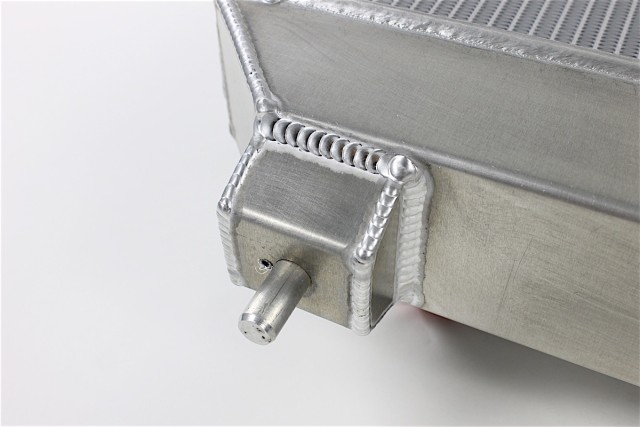
“Most people only buy a Chinese radiator once,” Justin Larocque from Be Cool joked. Cheap stuff might get the job done for now, but when you’re protecting an expensive performance engine from overheating in critical, time-sensitive situations like racing, do you really want to cut corners?
“Also, the heavier the car is, the more cooling you’ll need,” Larocque explained. “So for Mazda MX-5s, for instance, you’ll see a lot of guys running single core radiators, not just because of spatial limitations in the engine bay, but because the car is relatively light and therefore doesn’t require as much cooling as a 3500-pound car.”
In It For The Long Haul
Some might think that, given Project Lucky 13’s aspirations for splitting its duties between daily driving and road course work, this cooling system might be overkill.
If Project Lucky 13 were going to live the life of a typical Camaro that might be a fair assertion, but if you’re building a real-deal track car, you’ll probably already be well aware that after safety equipment, heat management is probably your highest priority if you’re going to have a good time and potentially be successful out on the race track.
Sure, Lucky 13 isn’t being built to run in NASA’s Camaro Mustang Challenge series or a 24-hour endurance event. But what happens if we decide to go do a day’s worth of SCCA Time Trial sessions at Buttonwillow in the middle of July? With a naturally-aspirated motor that is happy to run all day and a set of Wilwood brakes that we fully expect to have the stamina to outlast us; the last thing we want is for the cooling system to put the kibosh on good times.
All buttoned up, the system doesn’t take up much more space than the stock pieces did but it provides substantially more cooling capability. It might be more than you’d need for the daily commute but prolonged lapping will quickly reveal the weak spots in your build, particularly if you keep a fairly brisk pace on track. With this new dual core radiator and pair of electric fans, we know we won’t have to worry about Project Lucky 13 having the cooling capacity we’ll need in the future – we could turn this car into a purpose-built racer without touching the cooling system at all. Doing upgrades like these before you abruptly discover you need them can prevent a DNF or a call to your local towing company.
And while cooling system components might not have the sex appeal of horsepower-adding parts like camshafts and cylinder heads, all the power in the world doesn’t mean a whole lot if you can only use it for five minutes at a time. Something to keep in mind when you’re sorting out your next track-focused upgrade.




